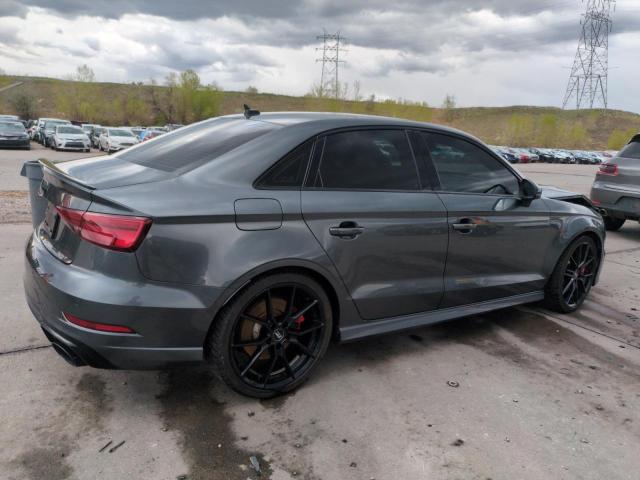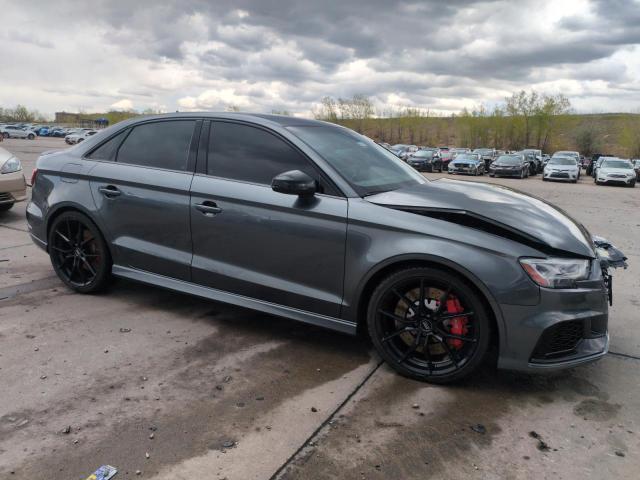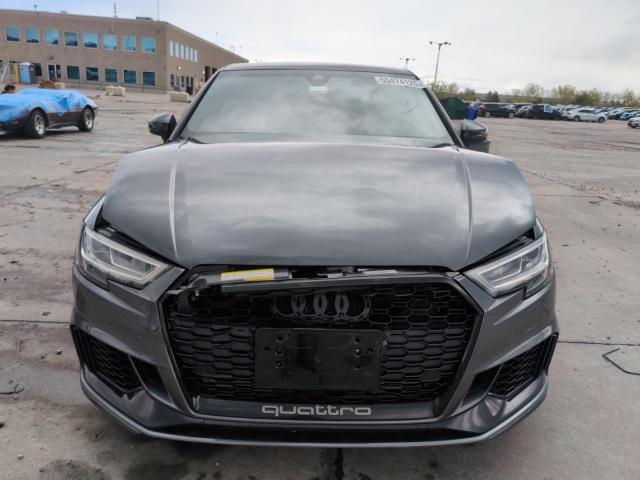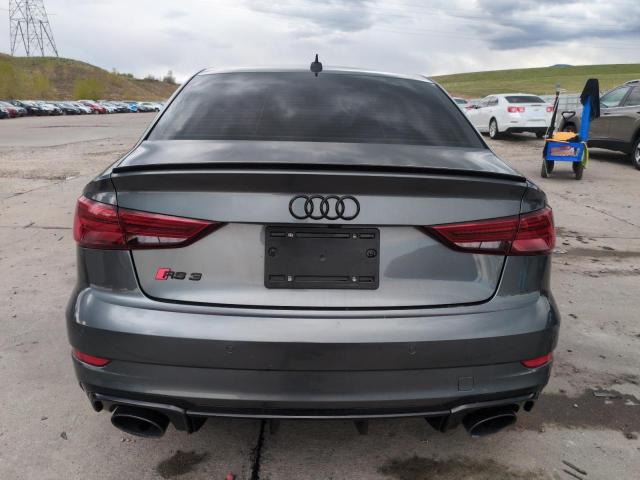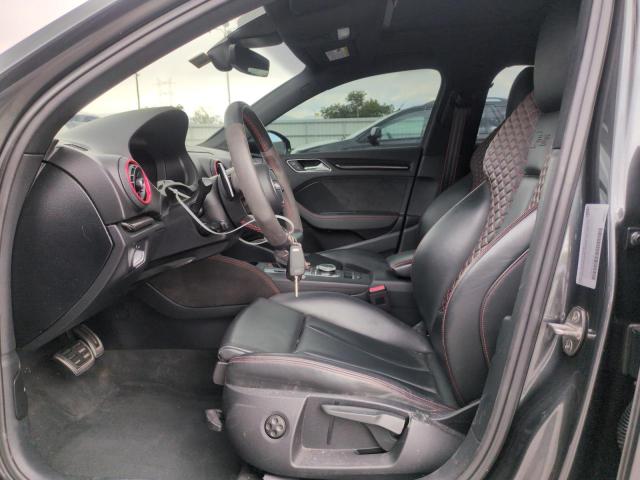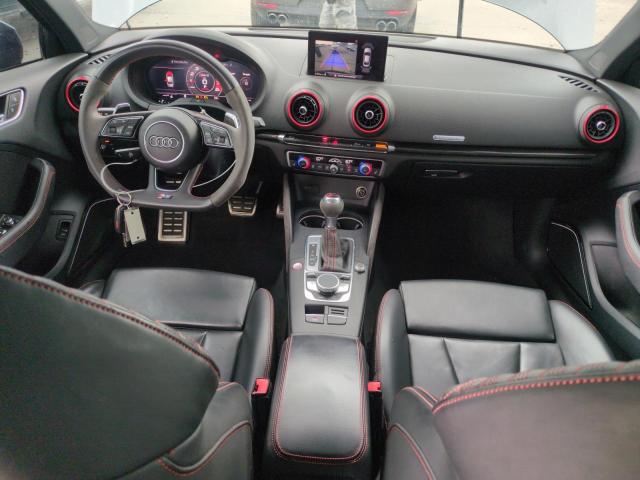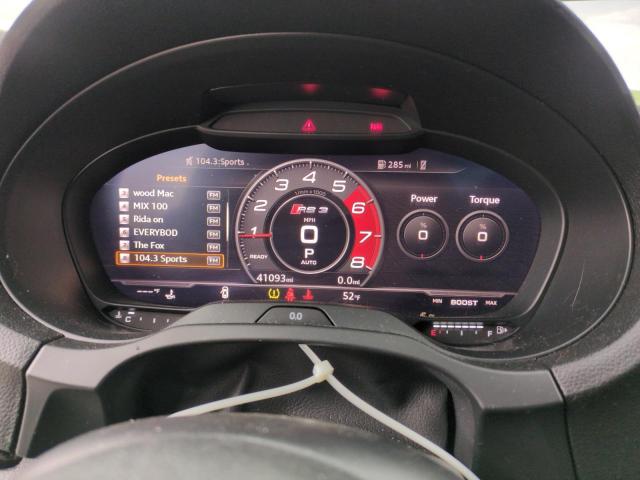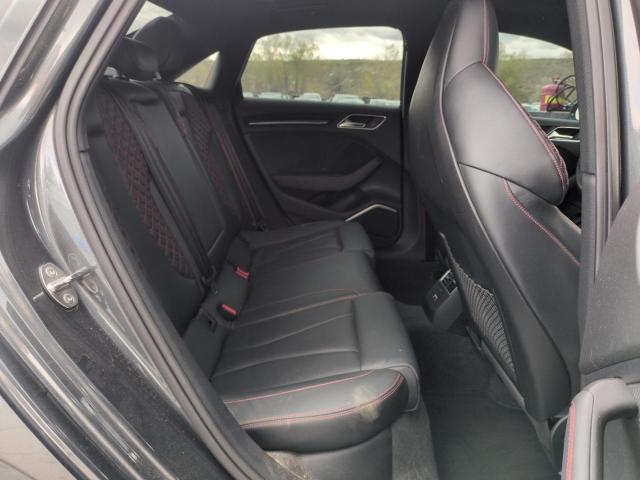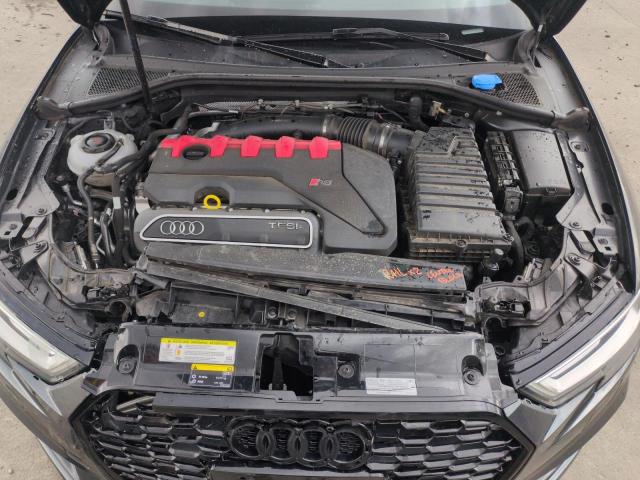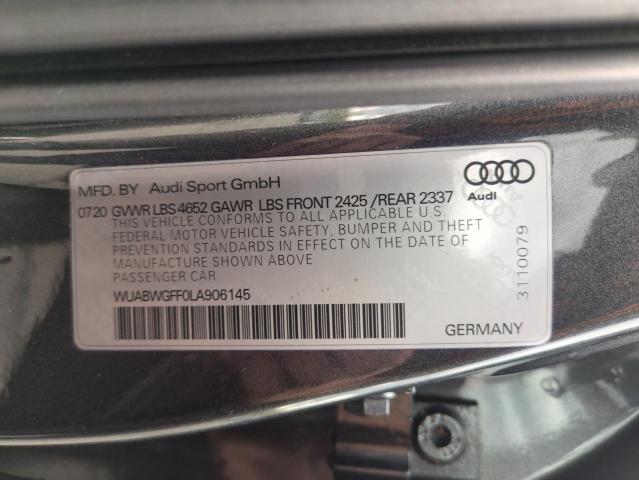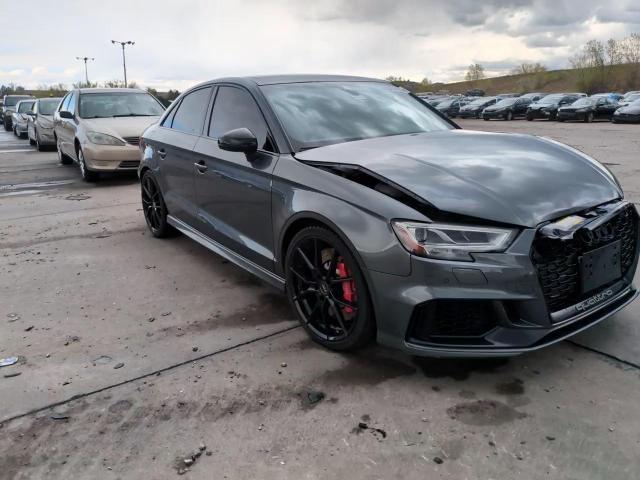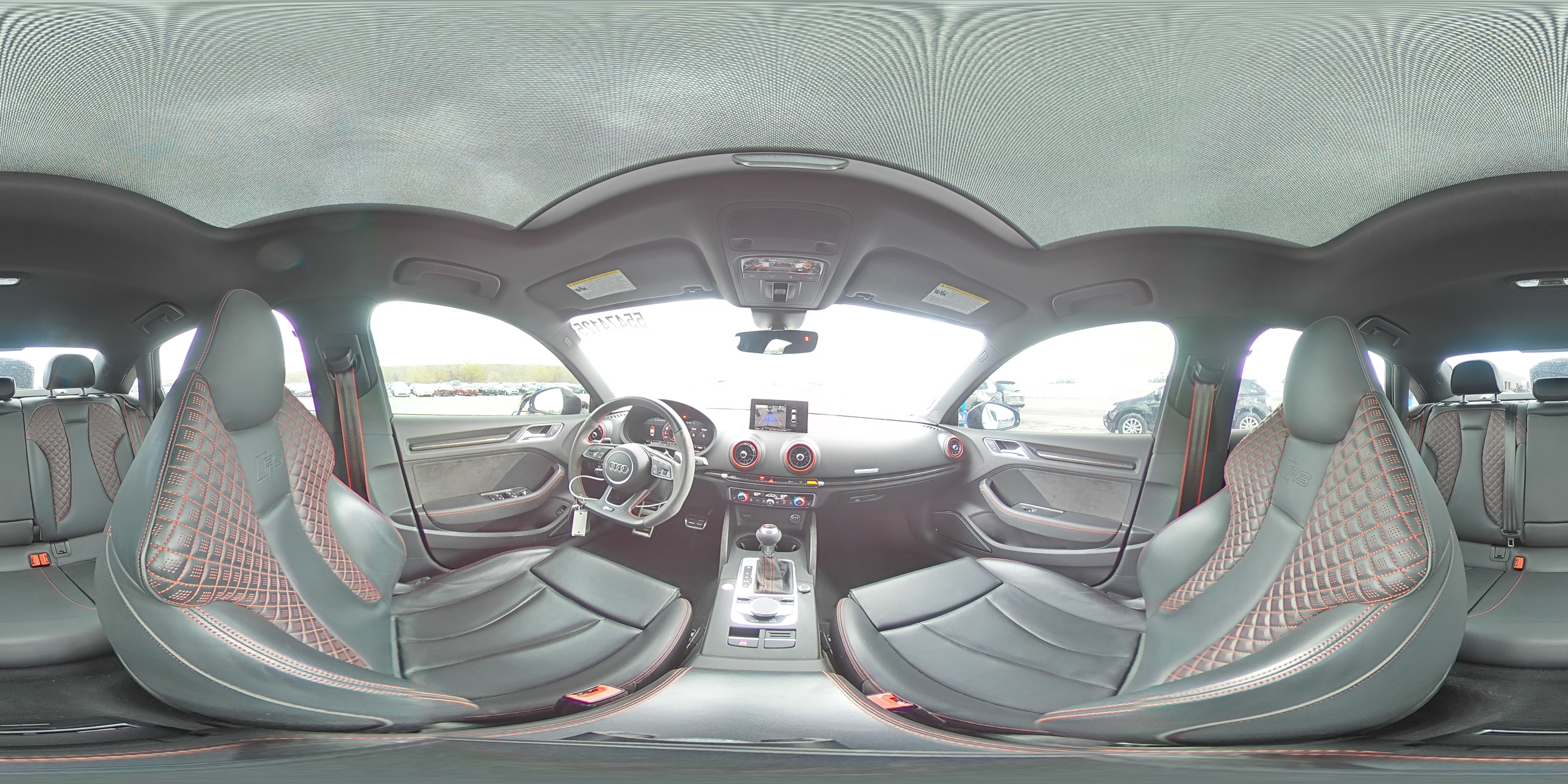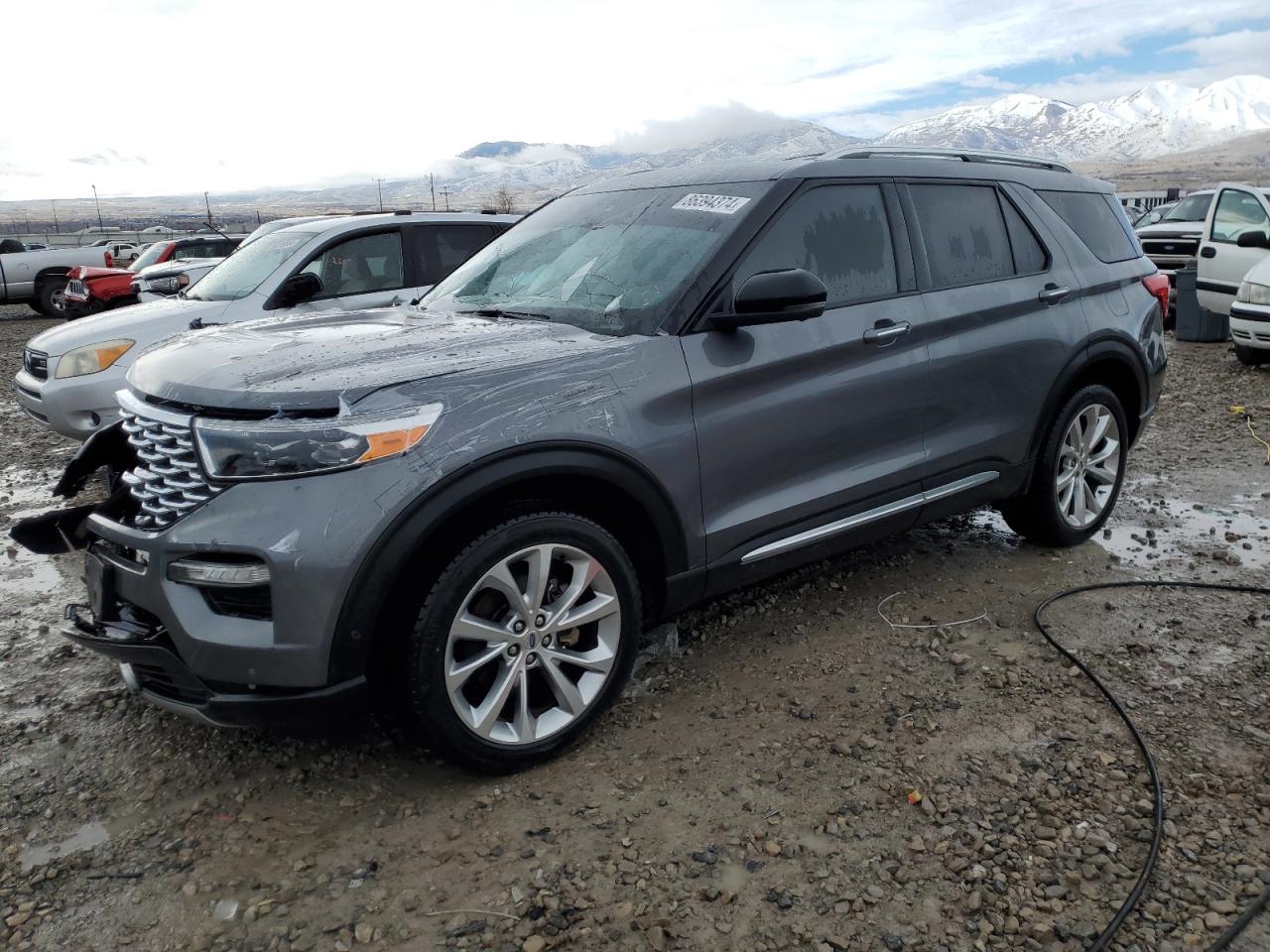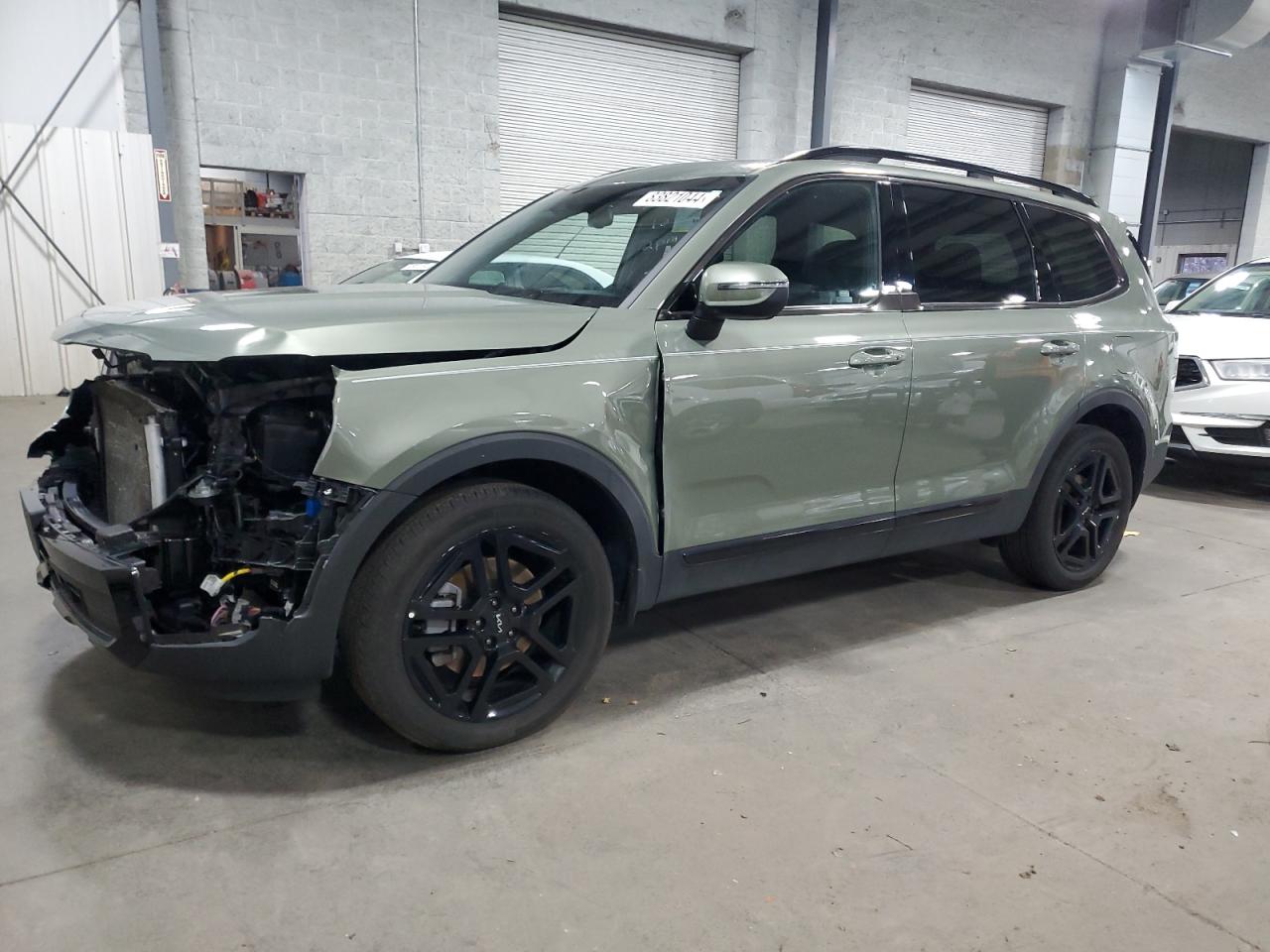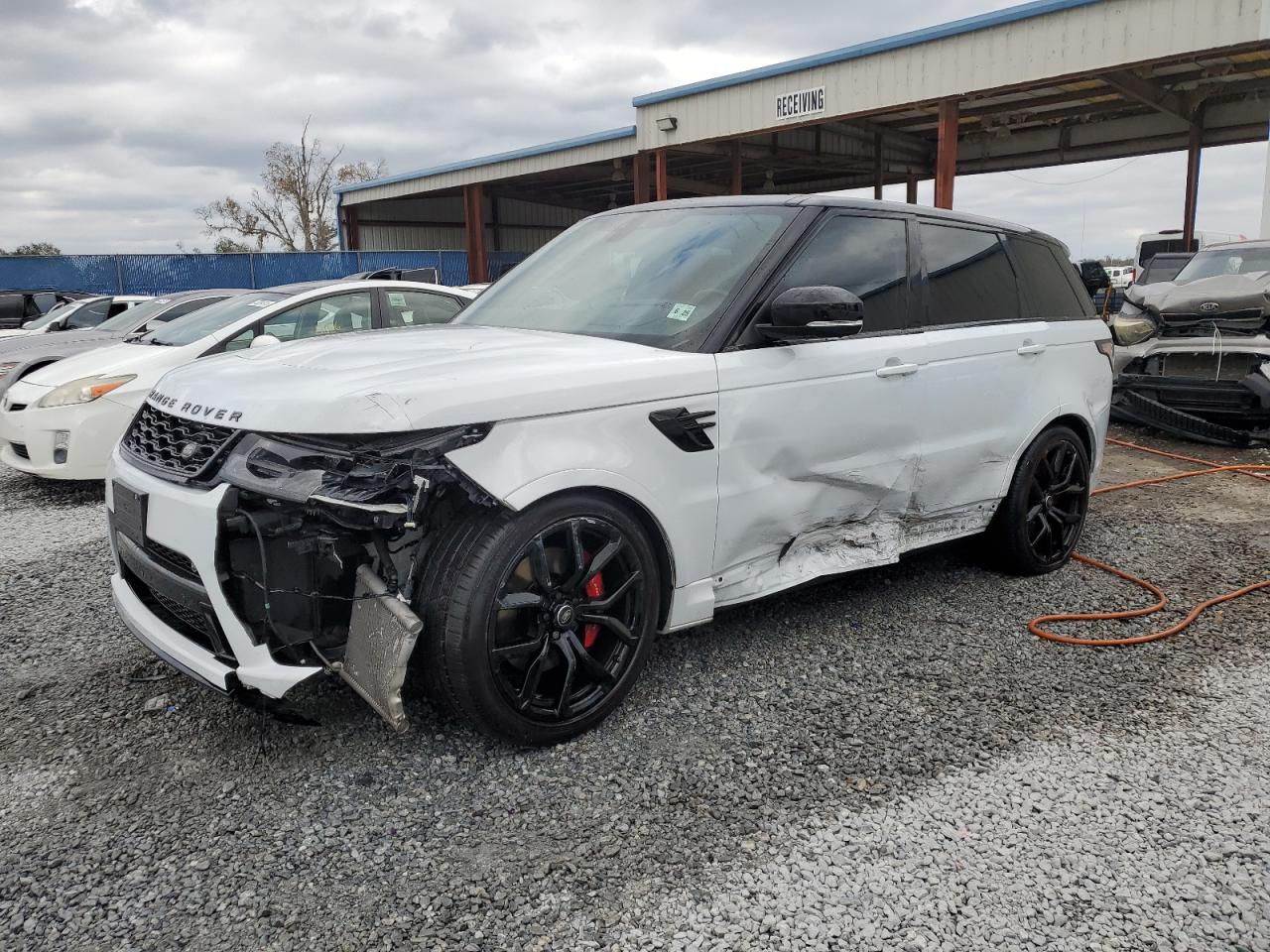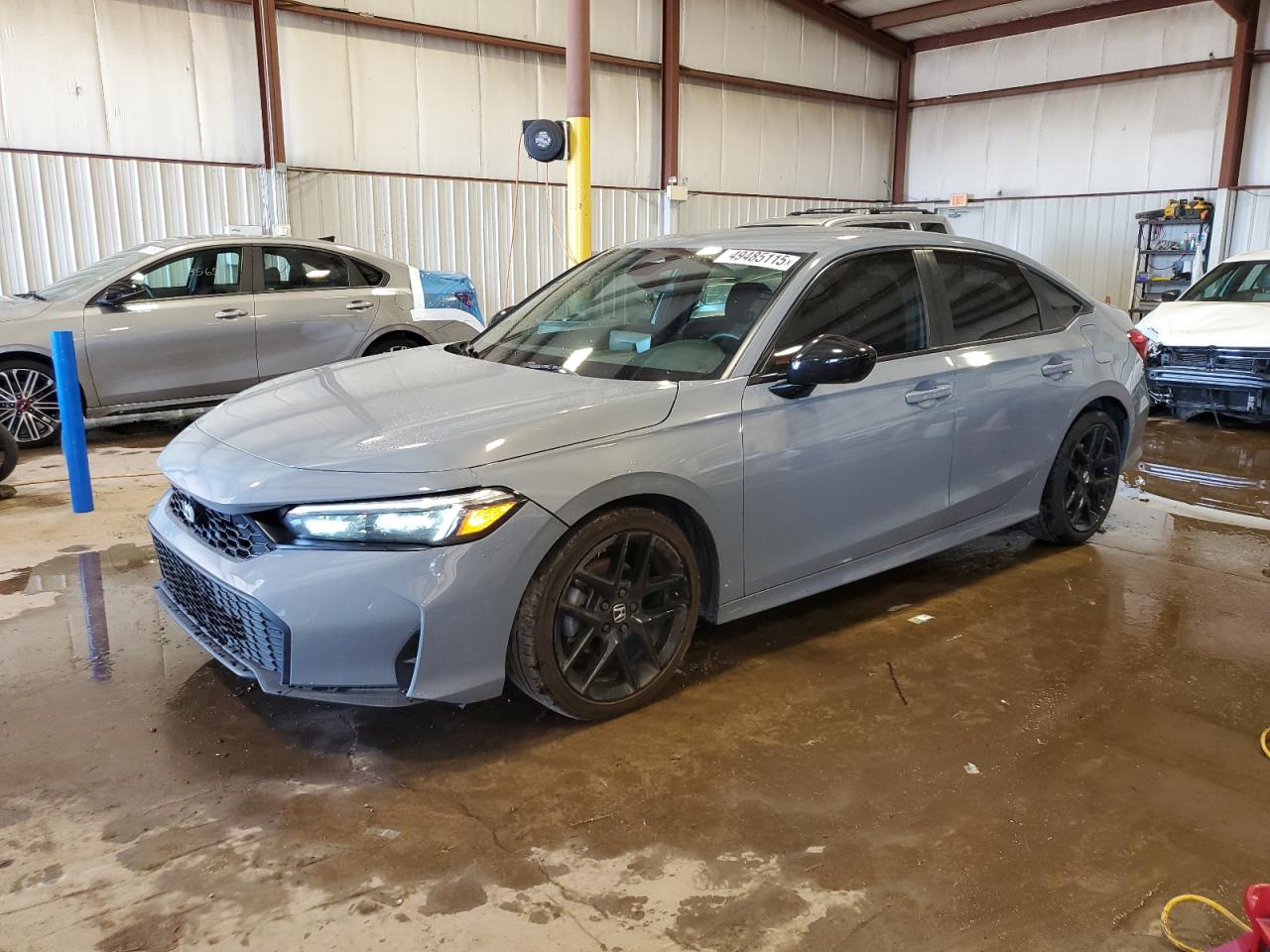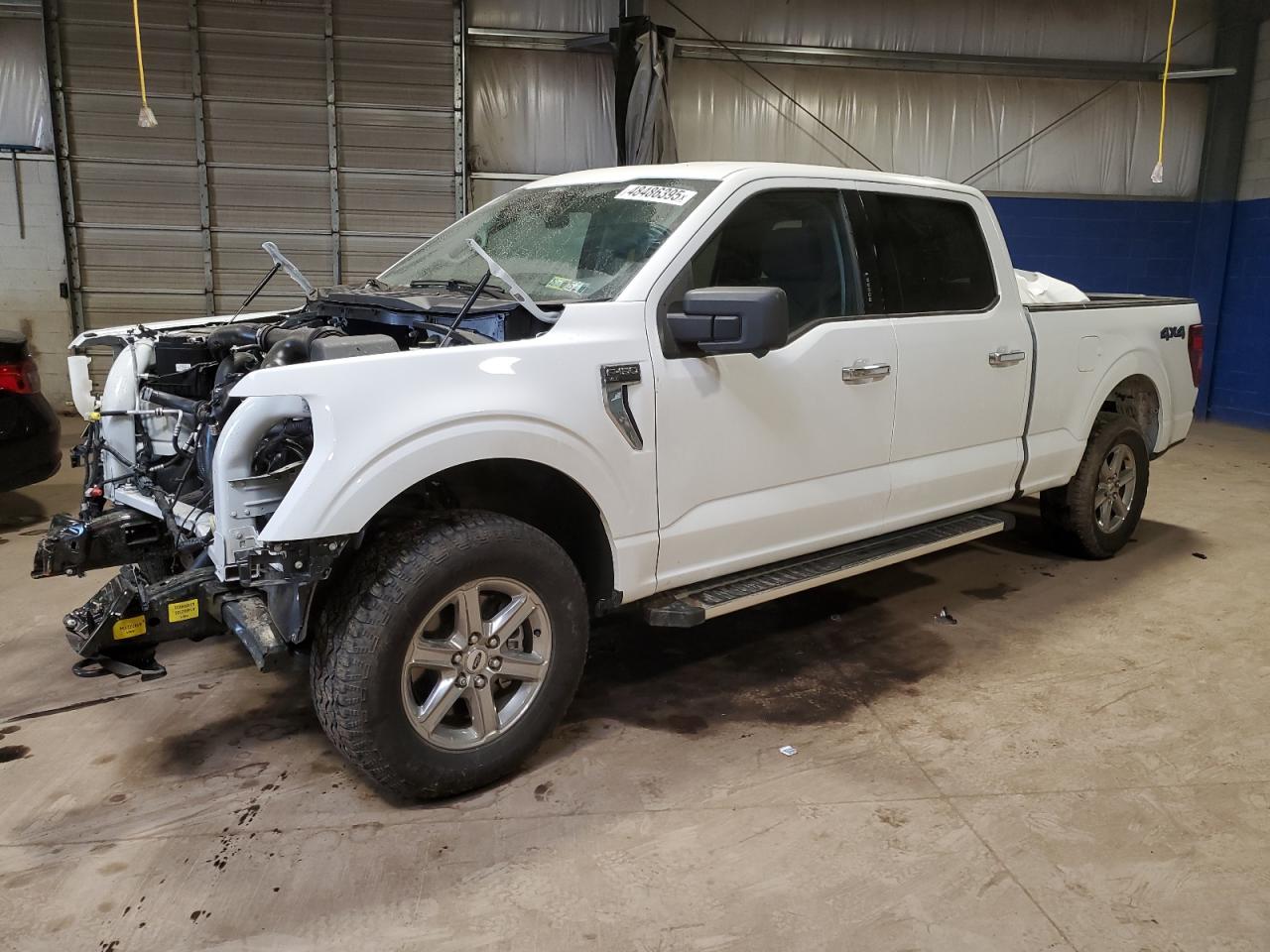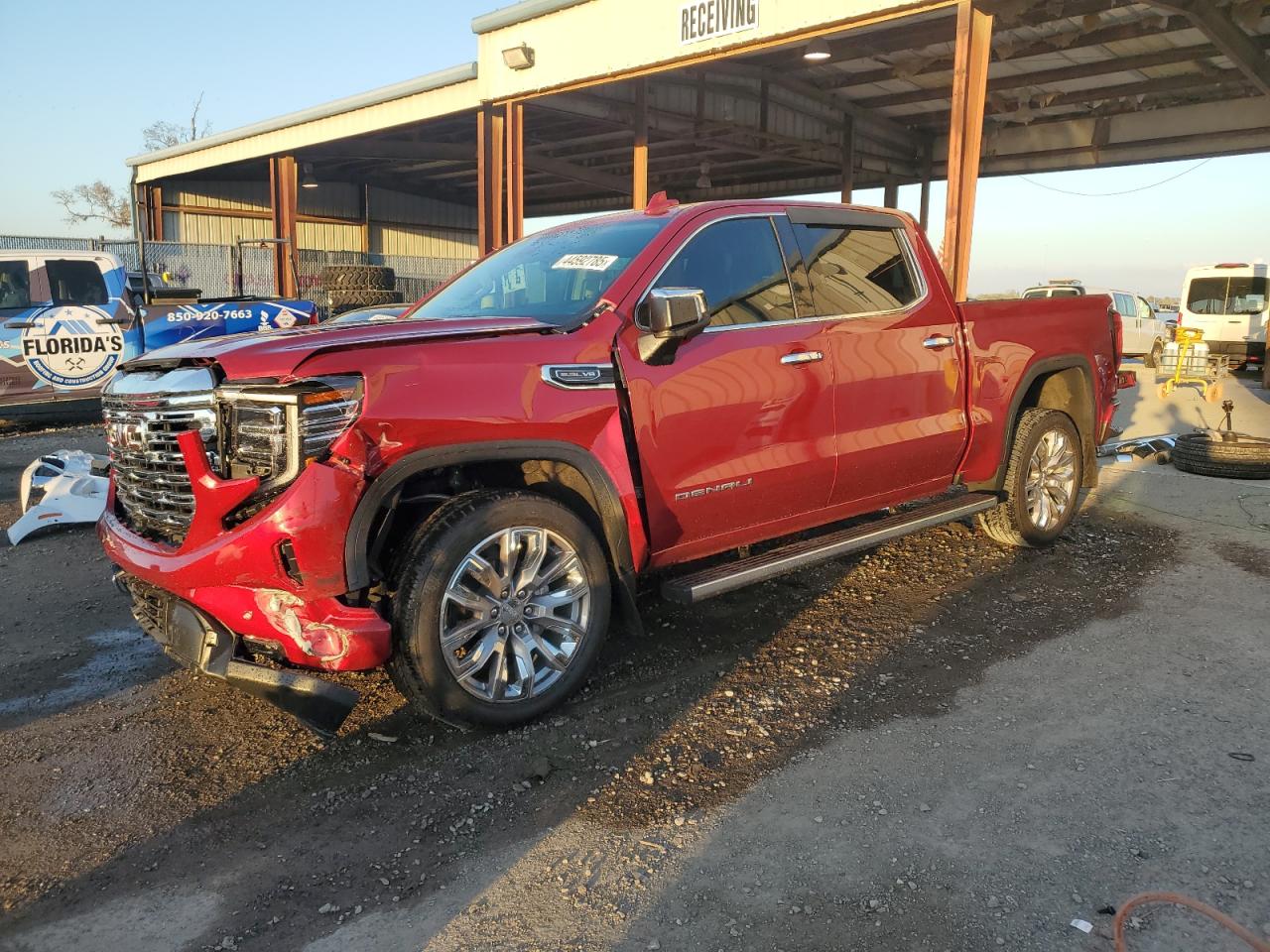2020 AUDI RS 3 | WUABWGFF0LA906145
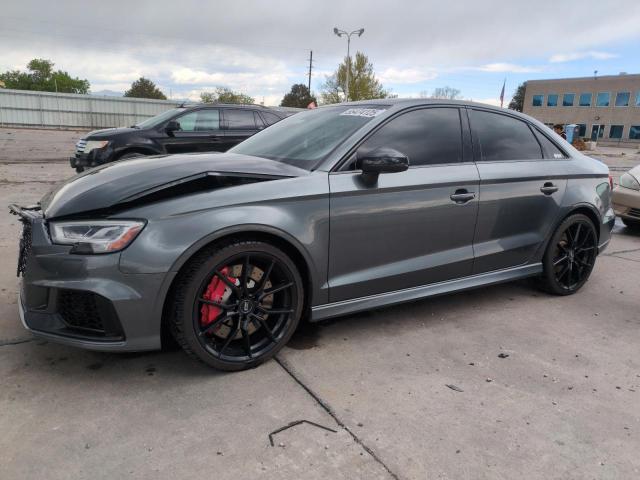 ❯
❯
Specifications
1
~$62,000
Engine: 2.5L turbocharged inline-5
Torque: 480 Nm
0–100 km/h: ~4.1 s
The RS3 brought genuine performance credentials to the compact sedan segment in North America. At its core lies a distinctive 2.5-liter five-cylinder turbocharged engine, a layout deeply tied to Audi’s motorsport heritage. Producing up to 394 horsepower and 354 lb-ft of torque, it allows the RS3 to sprint from 0 to 60 mph in just 3.8 seconds, a staggering figure for a car of this size and class.
Beyond the numbers, the RS3’s compact dimensions, standard quattro all-wheel drive, and advanced chassis tuning give it exceptional handling balance. The lightweight front end combined with torque vectoring makes it nimble through corners and planted in acceleration, delivering performance that feels more in line with sports coupes than compact sedans.
Visually restrained but clearly purposeful, the RS3 features flared fenders, larger brakes, dual oval exhausts, and subtle badging. Inside, optional RS sport seats and Alcantara accents complete the performance atmosphere. The result is a car that blends everyday usability with enthusiast-grade performance in a compact package.
Body Styles
The Audi RS3 was offered as a 5-door Sportback hatchback and, starting in 2017, as a 4-door Sedan — the latter tailored for global markets like North America and Asia. Both body styles feature aggressive RS-specific bumpers, widened fenders, a fixed rear spoiler (lip spoiler on sedan), twin oval RS exhaust tips, and deeper side skirts. The wide front track and larger air intakes give the RS3 a squat, muscular stance, while adaptive LED headlights and a gloss black honeycomb grille signal its performance pedigree.
Model Name Meaning (Manufacturer)
The name Audi RS3 follows Audi’s high-performance naming structure, where each element communicates the vehicle’s segment and performance tier. The “RS” stands for “RennSport”, a German term meaning “racing sport.” It signifies that the vehicle belongs to Audi Sport GmbH’s top-tier performance division, delivering motorsport-inspired engineering, aggressive styling, and enhanced driving dynamics.
The number “3” places the RS3 within the A3 family, Audi’s compact car range. While the standard A3 is aimed at daily comfort and efficiency, the RS3 is its most extreme version — equipped with Audi’s iconic 2.5-liter turbocharged inline-5 engine, quattro all-wheel drive, and performance-tuned suspension and brakes.
From the manufacturer’s perspective, RS models represent the pinnacle of performance for each series, and the RS3 in particular is positioned as a track-capable car disguised as a premium compact sedan or hatchback. Its name signals racing pedigree and exclusivity, while maintaining the everyday usability of the A3 platform.
Model Name Meaning (Languages)
“RS” is a globally recognized performance badge, much like “M” for BMW or “AMG” for Mercedes-Benz. It retains its German identity in all markets. The number “3” signals segment size, while the overall model name “RS3” has become synonymous with turbocharged five-cylinder heritage and rally-bred dynamics.
Body & Interior Colors and Rims
The RS3 was offered in bold and refined exterior finishes. Core colors included Daytona Gray Pearl, Mythos Black Metallic, Glacier White Metallic, and Tango Red Metallic. Performance hues like Ara Blue Crystal Effect, Catalunya Red, and Nardo Gray were exclusive or optional on RS models. Audi Exclusive allowed customers to spec nearly any custom color, including heritage rally tones like Nogaro Blue or Solar Orange.
Inside, the RS3 balanced motorsport flair with daily comfort. Standard features included RS sport seats in Fine Nappa leather, available in Black with Crescendo Red or Rock Gray contrast stitching, or optional diamond quilting. Carbon atlas trim, stainless steel pedals, and a flat-bottom RS steering wheel reinforced its performance focus. Optional RS Design Packages added colored seat belts, air vent accents, and Alcantara details.
Wheels came standard in 19-inch designs, with multiple spoke patterns available: 5-arm rotor, twin-spoke, and Y-spoke styles in Gloss Anthracite, Titanium Matte, or Polished Silver. Some variants offered Black Optics or Red Brake Calipers packages, while high-performance Pirelli P Zero or Michelin Pilot Sport 4S tires were optional. Ceramic front brakes were also offered from 2018 onward in some markets.
Top Expensive Options
- Carbon Ceramic Brakes (front): $4,500
- Bang & Olufsen 705W Premium Sound System: $950
- RS Design Package (colored seatbelts, stitching, Alcantara): $1,400
- MMI Navigation Plus with Virtual Cockpit: $2,600
- Magnetic Ride Adaptive Suspension: $1,200
- Audi Matrix LED Headlights with Dynamic Indicators: $1,500
- Exclusive Paint from Audi Exclusive Palette: $3,900+
- Super Sport Seats with Diamond Stitching: $1,500
- Black Optics Package: $1,300
- 19" Forged Aluminum Wheels (lightweight): $2,000
vs Competitors
The RS3 competed directly with the Mercedes-AMG A45, BMW M2, and Golf R, though it carved its own niche with the iconic inline-5 engine — a modern nod to the legendary Audi Quattro rally cars. Unlike the 4-cylinder AMG and Golf, the RS3 delivered unmistakable five-cylinder growl and visceral mid-range torque. While the M2 offered rear-wheel-drive engagement, the RS3’s Quattro AWD gave it exceptional all-weather traction and brutal off-the-line acceleration. In many tests, the RS3 out-accelerated even V8 muscle cars, and the sedan format gave it a sleeper edge for enthusiasts seeking understated performance.
Fun Fact
The 2.5L inline-5 engine in the RS3 won the “International Engine of the Year” award nine times in a row (2010–2018). It’s also a modern homage to Audi’s Group B rally dominance in the 1980s, and remains one of the few five-cylinder engines still in production. In fact, its distinctive firing order (1-2-4-5-3) contributes to the signature warbling exhaust note that’s become a cult favorite among enthusiasts.
Lot Details
-
Sale Date09/Jun/2025
-
Lot Number55474125
-
Sale document
-
Location
-
Odometer41,093 miles (66,133 km)
-
Primary Damage:FRONT END
-
Seller
-
Fuel
-
Engine Type2.5L 5
-
Transmission
-
Drive Type
-
Color
Final Bid Audi RS3 (2020)
$22,900
$28,575
$34,250
Specifications
1
~$62,000
Torque:
0–100 km/h:
The RS3 brought genuine performance credentials to the compact sedan segment in North America. At its core lies a distinctive 2.5-liter five-cylinder turbocharged engine, a layout deeply tied to Audi’s motorsport heritage. Producing up to 394 horsepower and 354 lb-ft of torque, it allows the RS3 to sprint from 0 to 60 mph in just 3.8 seconds, a staggering figure for a car of this size and class.
Beyond the numbers, the RS3’s compact dimensions, standard quattro all-wheel drive, and advanced chassis tuning give it exceptional handling balance. The lightweight front end combined with torque vectoring makes it nimble through corners and planted in acceleration, delivering performance that feels more in line with sports coupes than compact sedans.
Visually restrained but clearly purposeful, the RS3 features flared fenders, larger brakes, dual oval exhausts, and subtle badging. Inside, optional RS sport seats and Alcantara accents complete the performance atmosphere. The result is a car that blends everyday usability with enthusiast-grade performance in a compact package.
Body Styles
The Audi RS3 was offered as a 5-door Sportback hatchback and, starting in 2017, as a 4-door Sedan — the latter tailored for global markets like North America and Asia. Both body styles feature aggressive RS-specific bumpers, widened fenders, a fixed rear spoiler (lip spoiler on sedan), twin oval RS exhaust tips, and deeper side skirts. The wide front track and larger air intakes give the RS3 a squat, muscular stance, while adaptive LED headlights and a gloss black honeycomb grille signal its performance pedigree.
Model Name Meaning (Manufacturer)
The name Audi RS3 follows Audi’s high-performance naming structure, where each element communicates the vehicle’s segment and performance tier. The “RS” stands for “RennSport”, a German term meaning “racing sport.” It signifies that the vehicle belongs to Audi Sport GmbH’s top-tier performance division, delivering motorsport-inspired engineering, aggressive styling, and enhanced driving dynamics.
The number “3” places the RS3 within the A3 family, Audi’s compact car range. While the standard A3 is aimed at daily comfort and efficiency, the RS3 is its most extreme version — equipped with Audi’s iconic 2.5-liter turbocharged inline-5 engine, quattro all-wheel drive, and performance-tuned suspension and brakes.
From the manufacturer’s perspective, RS models represent the pinnacle of performance for each series, and the RS3 in particular is positioned as a track-capable car disguised as a premium compact sedan or hatchback. Its name signals racing pedigree and exclusivity, while maintaining the everyday usability of the A3 platform.
Model Name Meaning (Languages)
“RS” is a globally recognized performance badge, much like “M” for BMW or “AMG” for Mercedes-Benz. It retains its German identity in all markets. The number “3” signals segment size, while the overall model name “RS3” has become synonymous with turbocharged five-cylinder heritage and rally-bred dynamics.
Body & Interior Colors and Rims
The RS3 was offered in bold and refined exterior finishes. Core colors included Daytona Gray Pearl, Mythos Black Metallic, Glacier White Metallic, and Tango Red Metallic. Performance hues like Ara Blue Crystal Effect, Catalunya Red, and Nardo Gray were exclusive or optional on RS models. Audi Exclusive allowed customers to spec nearly any custom color, including heritage rally tones like Nogaro Blue or Solar Orange.
Inside, the RS3 balanced motorsport flair with daily comfort. Standard features included RS sport seats in Fine Nappa leather, available in Black with Crescendo Red or Rock Gray contrast stitching, or optional diamond quilting. Carbon atlas trim, stainless steel pedals, and a flat-bottom RS steering wheel reinforced its performance focus. Optional RS Design Packages added colored seat belts, air vent accents, and Alcantara details.
Wheels came standard in 19-inch designs, with multiple spoke patterns available: 5-arm rotor, twin-spoke, and Y-spoke styles in Gloss Anthracite, Titanium Matte, or Polished Silver. Some variants offered Black Optics or Red Brake Calipers packages, while high-performance Pirelli P Zero or Michelin Pilot Sport 4S tires were optional. Ceramic front brakes were also offered from 2018 onward in some markets.
Top Expensive Options
- Carbon Ceramic Brakes (front): $4,500
- Bang & Olufsen 705W Premium Sound System: $950
- RS Design Package (colored seatbelts, stitching, Alcantara): $1,400
- MMI Navigation Plus with Virtual Cockpit: $2,600
- Magnetic Ride Adaptive Suspension: $1,200
- Audi Matrix LED Headlights with Dynamic Indicators: $1,500
- Exclusive Paint from Audi Exclusive Palette: $3,900+
- Super Sport Seats with Diamond Stitching: $1,500
- Black Optics Package: $1,300
- 19" Forged Aluminum Wheels (lightweight): $2,000
vs Competitors
The RS3 competed directly with the Mercedes-AMG A45, BMW M2, and Golf R, though it carved its own niche with the iconic inline-5 engine — a modern nod to the legendary Audi Quattro rally cars. Unlike the 4-cylinder AMG and Golf, the RS3 delivered unmistakable five-cylinder growl and visceral mid-range torque. While the M2 offered rear-wheel-drive engagement, the RS3’s Quattro AWD gave it exceptional all-weather traction and brutal off-the-line acceleration. In many tests, the RS3 out-accelerated even V8 muscle cars, and the sedan format gave it a sleeper edge for enthusiasts seeking understated performance.
Fun Fact
The 2.5L inline-5 engine in the RS3 won the “International Engine of the Year” award nine times in a row (2010–2018). It’s also a modern homage to Audi’s Group B rally dominance in the 1980s, and remains one of the few five-cylinder engines still in production. In fact, its distinctive firing order (1-2-4-5-3) contributes to the signature warbling exhaust note that’s become a cult favorite among enthusiasts.


